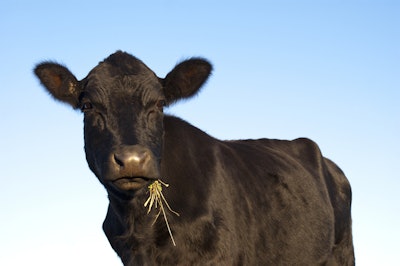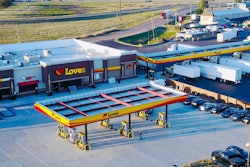
The U.S. Department of Transportation will soon publish an interim final rule that clarifies agricultural commodity and livestock definitions in federal hours of service regulations to make enforcement of the regs more consistent. Specifically, the rule clarifies the definition of the terms “any agricultural commodity,” “livestock,” and “non-processed food,” as the terms are used in the definition of “agricultural commodity” for HOS regs.
For the definition of “livestock,” the Federal Motor Carrier Safety Administration is keeping the current definition, but also expanding it to include insects and “all other living animals,” including aquatic animals. The definition of “agricultural commodity” is being clarified to include horticultural products at risk of dying or degrading during transport.
“Our nation’s farmers and agriculture haulers will benefit from this clarification of the rules and will be able to deliver their products in a safer and more efficient manner,” said Federal Motor Carrier Safety Administration Deputy Administrator Wiley Deck. “These improved rules will help farmers move commodities and get food to our grocery stores. We have heard the concerns from our farmers and ag haulers and we’ve worked closely with USDA and the industry to provide regulatory clarity and craft this new rule.”
However, at least one major agricultural organization objects to the FMCSA’s actions, saying it will lead to inconsistent roadside enforcement.
The United States Cattlemen’s Association’s Transportation Committee Chairman Steve Hilker issued a statement following the release of the interim final rule:
“For several years, USCA has specifically requested FMCSA provide clear, consistent regulatory definitions for transporters of live animals and/or beef. Both are highly perishable commodities, and the lack of clarity surrounding these definitions has held up numerous drivers over the years facing errant roadside enforcement.
“The interim final rule issued today actually made current HOS regulations stricter, as it excludes frozen foods from current exemptions. There is no way for a driver to prove that a load they are carrying in a refrigerated truck is NOT frozen without risking rejection of the load by breaking the seal and opening the boxed meat.
“USCA’s Transportation Committee will meet in the days ahead to review our formal response to this interim final rule.”
Under current FMCSA regulations, drivers transporting agricultural commodities from their source to a location within 150 air miles of the source, during harvest and planting seasons as defined by each state, are exempt for hours of service regs. Additionally, livestock haulers are exempt from the 30-minute break provision while livestock are being hauled.
The existing definition of “agricultural commodity” that was adopted by Congress and used until now by FMCSA included “any agricultural commodity, non-processed food, feed, fiber or livestock.”
Under the interim final rule to be published in the coming days, “any agricultural commodity” will be defined as “horticultural products at risk of perishing, or degrading in quality, during transport by commercial motor vehicle, including plants, sod, flowers, shrubs, ornamentals, seedlings, live trees and Christmas trees.”
The existing definition of “livestock,” from the Emergency Livestock Feed Assistance Act of 1988 as amended by the 2018 farm bill, included “cattle, elk, reindeer, bison, horses, deer, sheep, goats, swine, poultry (including egg-producing poultry), llamas, alpacas, live fish, crawfish, and other animals that are part of a foundation herd (including dairy producing cattle) or offspring.”
FMCSA will now interpret “livestock” to include those animals, as well as “insects, and all other living animals cultivated, grown or raised for commercial purposes, including aquatic animals.”
Finally, the agency also clarified the definition of “non-processed food” as follows:
“Non-processed food means food commodities in a raw or natural state and not subjected to significant post-harvest changes to enhance shelf life, such as canning, jarring, freezing or drying. The term ‘non-processed food’ includes fresh fruits and vegetables, and cereal and oilseed crops which have been minimally processed by cleaning, cooling, trimming, cutting, chopping, shucking, bagging or packaging to facilitate transport by commercial motor vehicle.”
The interim final rule will be published in the Federal Register in the coming days and will take effect 15 days after it is published. FMCSA is asking for public comment on the revised definitions above, including answers to the following questions:
- Will the clarifications of the terms “any agricultural commodity,” “non-processed food,” and “livestock” result in more consistent application of the HOS exemptions? Why or why not?
- Will the clarifications impact the number of drivers who would use the exemptions? If so, how and to what extent? For example, how, if at all, will including all living animals cultivated, grown, or raised for commercial purposes, including aquatic animals, within the definition of “livestock” impact the number of drivers?
- Will any of the clarifications result in higher or lower costs for the transportation of agricultural commodities and livestock?
- Will any of the clarifications result in other benefits to stakeholders, including consumers and State enforcement personnel?








